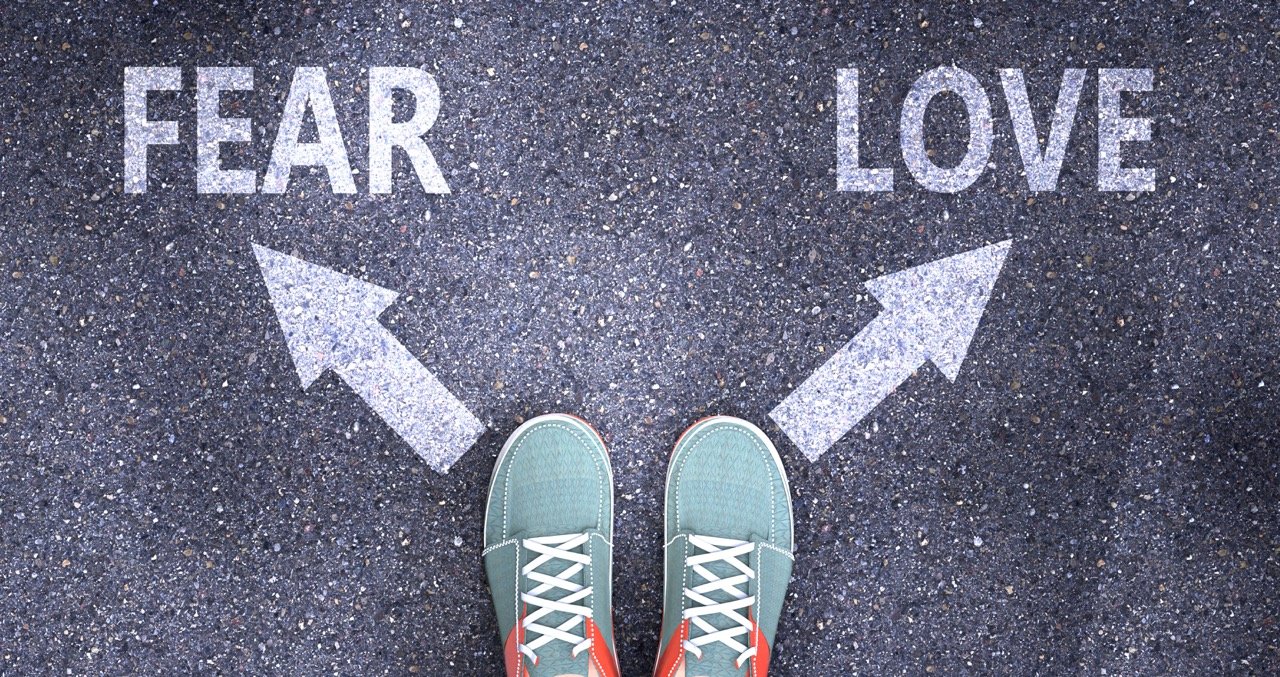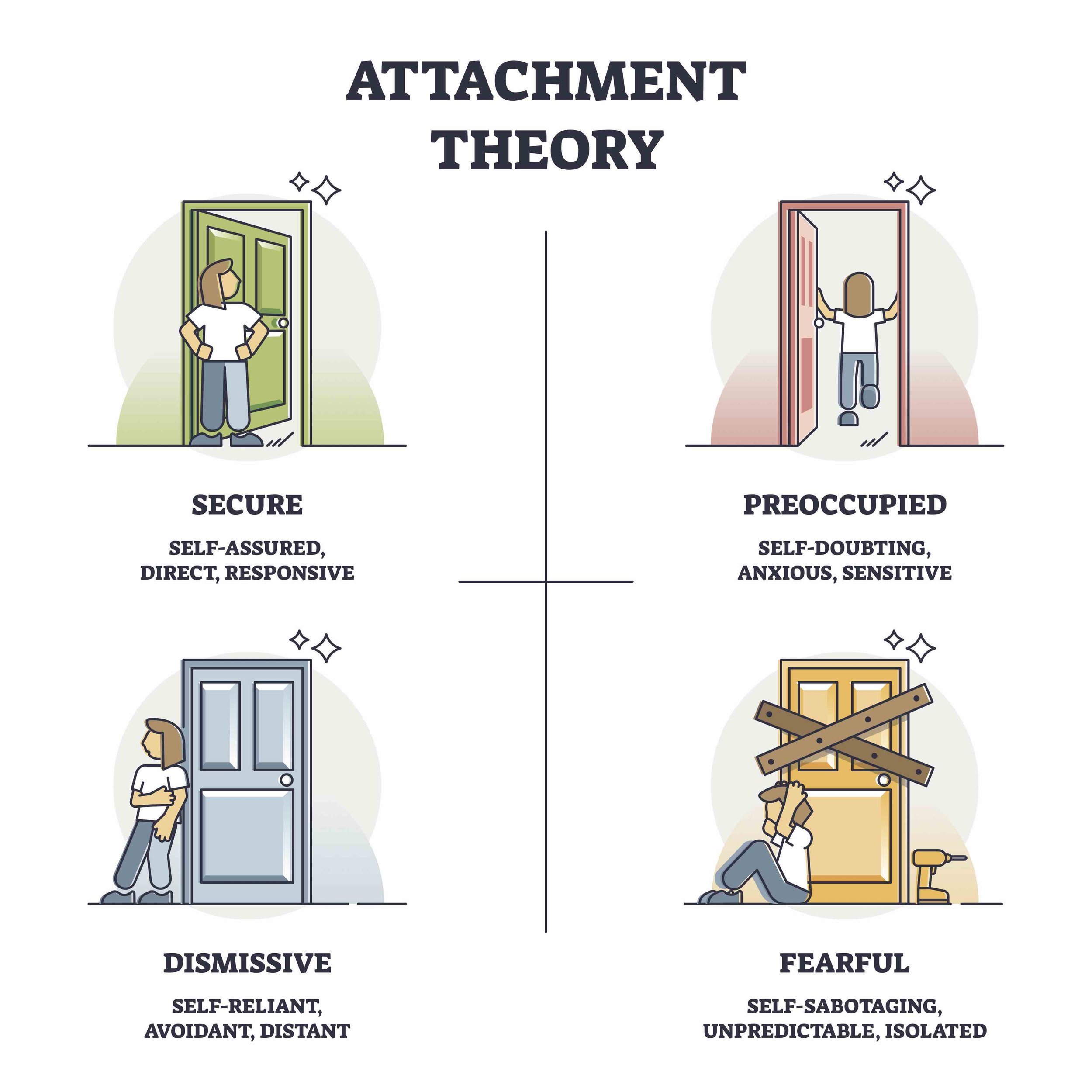How Disorganized Attachment Impacts Dating and Relationships
Have you ever known someone or maybe experienced this yourself, where sometimes the person seemed to be open and wanting connection and other times it felt like they were pulling away? Then they were close again?
Disorganized, or Fearful attachment style has to do with the way we relate to other people. When someone has a disorganized attachment style, it means they might lean toward either anxious or avoidant attachment style in relationships, or maybe oscillate back and forth between the two.
If you are frustrated in dating and relationships, it’s helpful to learn everything you can about your attachment style and how it’s impacting your relationships.
I know the term “disorganized attachment” can seem a bit judgy, but understanding this attachment style helps you to recognize this attachment pattern in yourself and in the people you’re relating with, and understanding our patterns is the first key to changing them. Ultimately this understanding helps you to be in a relationship where you feel seen and heard, safe to connect or safe to take your space, and where you can trust that everything is going to be okay.
So let’s talk about disorganized attachment style - it is one of four attachment styles that describe how we connect and relate with other people. These styles form when we’re very young, and determine how we connect and bond with people. The other 3 styles are called Anxious, Avoidant, and Secure. They are attachment adaptations, because they happened for a good reason early on to protect us and help us survive.
You can learn more about the attachment styles in my other posts, but to very briefly summarize, the secure attachment style has the easiest time in relationships. They are comfortable with intimacy, used to hearing and expressing needs easily, and good at both giving and receiving love.
The avoidant attachment style, also called Dismissive Avoidant, is hyper independent and tends to dismiss their own emotions and emotions of other people. Emotional intimacy can be a challenge. You might recognize them as the person who regularly withdraws to work or the gym and has forgotten to call their partner again.
And the anxious attachment style, also called ambivalent or preoccupied, is more dependent on others to help them calm, wants connection yet can push it away through passive aggressive behavior and complaining. You might recognize them as the person who is frustrated that they haven’t heard back from someone, and is trying to figure out what that means, and if the person still wants to be in a relationship.
So what is the Disorganized / Fearful Attachment Style?
The disorganized style is not yet as widely talked about as the anxious and avoidant styles, but it’s very important, and shows up more commonly than most people realize as a secondary or tertiary style. We typically have more than one attachment style in different situations or with different people, but one primary style. When someone has a primary disorganized style, it means that they can either lean toward anxious or avoidant attachment, or go back and forth between them. In addition, there is a kind of fear component that often stems from trauma or negative life experiences. You might hear the term “Fearful Avoidant”, just remember that the disorganized style can also lean towards anxious. What distinguishes it from the other styles is that particular fear component.
What Causes Disorganized Attachment Style
What happens to cause disorganized attachment early on is that the survival instinct and the bonding instinct got crosswired. This means that whoever a child normally would go to for safety, protection, and comfort — who they would connect with — was also chaotic, confusing, or threatening in some way. Sometimes there were external threats that got in the way of attachment, like medical situations, or a dangerous environment, that somehow encoded lack of safety in the nervous system.
If a caregiver had a lot of fear and dysregulation, but didn’t know how to calm themselves down, the child could spend a lot of time in sympathetic states like fight or flight, or a parasympathetic state like dissociation and shutdown. If they tend towards the fight state of the nervous system, they might act out and the resulting backlash from caregivers or adults could cause even more dysregulation. This reinforces the feeling of not being safe.
It is this lack of safety that causes problems with connection, and why people with disorganized attachment can want to connect with other people but then feel an unease or fear, or they worry that they’ll be judged, or taken advantage of. Sometimes this unease happens when getting to know people, other times it’s more when they might need to depend on others that the fear can kick in. Because they didn’t feel enough safety in childhood, the nervous system can tend towards fight/flight/freeze, and dissociation and shutdown are common states for people.
Disorganized Attachment Characteristics
So how do you recognize disorganized attachment?
People can feel overwhelmed by their feelings, they can have trouble trusting that people are safe and that it’s okay to get close to them. They might have a fear of getting hurt, a fear of being triggered or getting overwhelmed by their emotions. This fear can be from unresolved trauma. We learn from our experiences, so if someone never sensed that the original people who were supposed to keep them safe were able to do that, how are they supposed to go out and get into a relationship and let down their guard enough to get close to someone? And once they find someone to trust and enter into a relationship, they can sometimes feel like they’re on opposing teams instead of playing on the same side.
This can often result in a fair amount of conflict, as people struggle with nervous system dysregulation, going into fight, flight, or freeze often without realizing it.
So how might this play out?
Suppose someone is in a conversation with a loved one that turns heated, and they start to feel confused and have difficulty finding words, and then might even feel like they’re having trouble talking. Partly this is because there’s so much dorsal vagal activity in the nervous system that results in dissociation or shutdown, and less activity in the ventral vagal system, which is our social engagement. The vagus nerve is responsible for controlling the muscles to the throat, so they can have trouble getting words out. Other times people don’t feel confused or shut down, but instead they’re in fight or flight, so they can feel a lot of anger and have trouble calming themselves down. For example, if someone has a fear of not having control, because they didn’t have control when they were younger, they can go into more of a fight state in the nervous system where they’re fighting to make sure they’re heard or respected, or their needs are met. That’s one reason people with disorganized attachment can sometimes struggle with conflict in relationship. They can also interpret others’ cues as more threatening if they are coming from a place of dysregulation and focus on external threat. For example, if people are anxious and they look at neutral faces, they can perceive them as threatening, there have been research studies on this. Also, imagine if a partner makes a face that is slightly similar to a negative expression that a caregiver or someone in the past made that was threatening. The brain can promptly go into a protective mode, though the expression may or may not be tied to the same threatening behavior as it had been previously.
Disorganized Attachment and Dating
How someone goes about the dating process is largely going to depend on whether they lean more toward the anxious attachment side or more towards the avoidant attachment side.
However, what can happen is that because people have more threat in their nervous system, they can sometimes miss cues in the environment and end up in risky situations. So it is helpful to learn what types of people are safe and compatible partners. As people work towards calming the threat response in their systems and aligning toward safety, they also get better at gravitating toward safe secure relationships. The other adaptation that can happen with disorganized attachment is that the person feels so much lack of safety and trust that they have trouble trusting others and forming secure relationships.
During dating, there can be swings between moving closer to a partner and pulling back, depending on where the person is in their threat response. So they might tell the other person how wonderful they are in one moment and be distant the next. They can also be unsure around how much to share, due to boundaries, so they may over-share, then pull back, possibly seeming distant or angry.
In conversation, they might gaze off into space or appear dissociated, or speak in a way that is confusing and hard to follow. They might have big memory gaps or start sentences then not finish them. Some of these may not arise until they start to get closer in a relationship, as the internal confusion arises between attachment figure and threat.
Disorganized Attachment in Relationships
Once in a relationship, triggers will become more obvious. Depending on whether they are in an anxious or avoidant stance, they can argue and get defensive or shut down and dissociate, but the common theme is dysregulation in the nervous system, so they will have trouble calming down. Sometimes communication can feel like going in circles, where problems don’t get resolved, but there is a lot of emotional reactivity which might come out as yelling and screaming. It’s the middle of the night, but there’s lots of arguing and wondering if they’re going to be okay.
Because folks with disorganized attachment feel fear and lack of internal calm, they seek to gain control over their environment, such as through requests which come across as demanding or controlling to other people. This is their attempt to create a feeling of safety or order for themselves, because they try to create that feeling internally by controlling the external environment, since their internal environment so often feels uncontrollable and chaotic.
Triggers
Triggers for the disorganized style will depend on whether they lean anxious or avoidant. And if they flip back and forth between anxious and avoidant, they will have triggers for both. So if they are currently in an anxious stance, they might be triggered by the threat of abandonment, like when someone pulls away or doesn’t return a message. If they are in an avoidant stance, they might be triggered by losing independence, or by being criticized.
Additionally, they can be triggered by someone getting close because it’s activating that pattern that says the person you attach to is also not safe. So the avoidant side can get triggered in situations like moving in together, or talking about marriage or children or deeper commitment, but there is this deeper layer that says the people we have an attachment bond with aren’t safe, because this is the original blueprint laid down from when they are young.
What Helps the Disorganized / Fearful Attachment Style?
It is helpful for someone with this style to learn both how to soothe themselves and how to take in soothing from others, in other words self-regulation and co-regulation.
Being able to calm themselves down will lower the threat response and make other people seem less threatening when they are trying to get close in a normal, healthy way. It will also reduce the feeling of being out of control and needing to control others or the environment in order to feel safe.
Developing healthy boundaries for self and others can also be a huge help for the disorganized style. This can mean learning when and how much is appropriate to share, and recognizing and honoring their own needs in relationships as well as others’.
Many people find spiritual growth in working through and letting go of some of the trauma and negative life experiences which have contributed to this attachment adaptation.
It is also helpful to work on the anxious or avoidant adaptations, or both, depending on which is present. For example, for the disorganized anxious person, they will benefit from feeling more calm within themselves, and for the disorganized avoidant (Fearful Avoidant), they can benefit from opening up to greater connection and finding safety in co-regulation.
Many people who have already done work on a primary anxious or avoidant adaptation find additional layers of healing and growth by working through disorganized attachment.
If you found this post helpful, you might also enjoy reading about the anxious and avoidant attachment styles. You might also find it helpful to read about How to Get Triggered Less, for the Disorganized Attachment Style.
If you have questions, comment below. Thank you!





